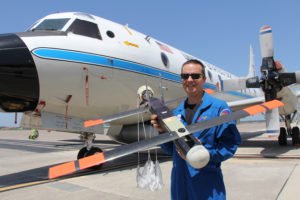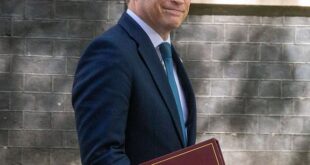Courtesy: NOAA
Drones may someday become the first line of defense in hurricane forecasting.
A NOAA research paper in Bulletin of the American Meteorological Society reveals that disposable UAS could be used to gather data from a hurricane’s lower eyewall – the most dangerous part.
“It’s where the storm draws energy from heat in the water, which influences how strong – and how quickly – the storm will develop. It’s also where the strongest winds lurk,” a NOAA release stated.
Closer observation of the lower eyewall allows forecasters to better understand critical data about developing hurricanes which, in turn, improves forecasting models. Conditions are too dangerous for manned flights into the storm. That’s where drones come to the rescue.
Since 2005, NOAA has researched and tested drone use. Two years ago, the agency deployed the Coyote fixed-wing drone into hurricanes Maria and Michael, two of the most powerful Atlantic hurricanes on record.
The mission surpassed expectations. “The drones were able to collect measurements of temperature and pressure, wind speed and direction, humidity and sea surface temperature as low as 360 feet above the water and at wind speeds up to 194 mph,” the NOAA release said.
“All of the other systems we use to measure winds inside a storm give us a snapshot of what’s going on,” NOAA meteorologist and project lead Joseph Cione said.
“[Drone] observations are continuous in nature. This is a big leap forward in the application of unmanned systems for hurricane forecasting.”
The Coyote project first took flight in 2016. A team from NOAA and Raytheon launched the drone from the agency’s P-3 Hurricane Hunter aircraft. The result: Coyote set a new distance record for data transmission and flight control. The data armed NOAA hurricane forecasters with real-time data on atmospheric air pressure, temperature, moisture, wind speed and direction. Most importantly, the drone could handle altitudes too low for manned aircraft to safely navigate.
“Observations from small unmanned systems are so important,” said Ghassan Alaka, a NOAA scientist working on NOAA’s Hurricane Weather Research and Forecasting Model. “They can help us validate and improve models, including predictions of the storm’s maximum intensity and what’s going on in the storm’s inner core.”
Jason is a longstanding contributor to DroneLife with an avid interest in all things tech. He focuses on anti-drone technologies and the public safety sector; police, fire, and search and rescue.
Beginning his career as a journalist in 1996, Jason has since written and edited thousands of engaging news articles, blog posts, press releases and online content.
Email Jason
TWITTER:@JasonPReagan
Subscribe to DroneLife here.
https://dronelife.com/2019/12/17/noaa-research-drones-improve-hurricane-forecasting/
 Unmanned Aerial Vehicle The latest drone news
Unmanned Aerial Vehicle The latest drone news



